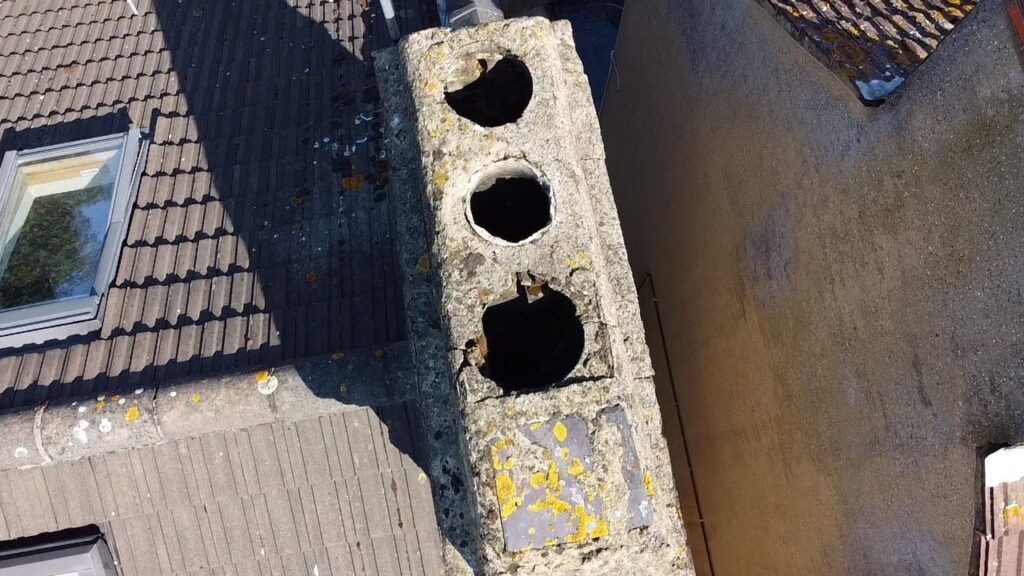When you think of chimney leaks, you probably think of the roof or some other part of your home. But water coming from your chimney? It might sound strange, but it’s not that uncommon. In fact, many homeowners see water coming down their chimneys for the first time during the winter months. If you have a fireplace in your home and you suddenly find the water coming down your Chimney sweeping this article is for you. Luckily, there are several potential causes of water coming down your chimney. In most cases, identifying what’s causing the leak shouldn’t be too hard and only take a few minutes. However, if you can’t figure out what is causing it or if the leak continues to happen again, it might be time to call in a professional.

Condensation
If there is frost or ice on your chimney, you could have a chimney leak. As warm air is drawn up the chimney, it may come into contact with cold bricks and mortar on the chimney walls. This causes frost to form and water vapour to condense on cold surfaces. When you see water dripping or collecting beneath your fireplace, it may be a result of frost and condensation. A small leak may not be a cause for major concern, but it’s best to get it fixed right away. Frost and condensation can lead to bigger problems if not addressed quickly. It can lead to water damage inside your home and could cause enough damage to require a complete rebuild of your chimney.
Damaged flashing
A chimney flashing is a metal or other material that’s used to protect the areas where your chimney and roof meet. If a flashing becomes bent, damaged, or dislodged it can leak water inside your home. Flashing is designed to divert water away from your home, not into it. This is especially important if you have a wood-burning fireplace. Water leaking into your home can cause major damage. Flashing problems are more common on chimneys that are part of a masonry fireplace. If you have a steel fireplace, a flashing issue is less likely. You can inspect your chimney flashing for damage by climbing up onto your roof. If you see any issues, you can contact a roofer to come out and repair or replace the flashing.
Cracked flaunching
Flaunching is a type of material used on chimneys where two walls meet. It’s used to divert water away from the chimney and away from your home. If you see water leaking into your home and the leak is near the chimney, the flaunching may be cracked or otherwise damaged. If you notice flaunching problems, they should be repaired as soon as possible. Continued water damage can cause major damage to your home.
Cracked bricks
Bricks are a common material used to build chimneys. If bricks become too brittle, cracked, or otherwise damaged, water can leak into your home. Bricks that are more than 10 years old are more likely to become damaged. If you notice water leaking into your home and there are bricks on your chimney, you should contact a contractor to have them replaced. You can do this yourself if your chimney is made of masonry units. These are bricks that are held together with mortar. To replace the bricks, you’ll need to remove the old ones and use new bricks to build a new chimney.
An Uncovered Flue
If you have a wood-burning fireplace, you’ll want to make sure the flue is covered. A flue is a path that smoke and other gasses take when they exit your home. When homeowners have wood-burning fireplaces, they often cover the flue with a metal or concrete cover. These covers are designed to protect the flue and keep out leaves, dust and other debris. If your flue isn’t covered, wind and rain can cause water to leak into your chimney. If you have a wood-burning fireplace, make sure to keep the flue covered. You can purchase a flue cover from any home improvement store.
Summary
Chimneys leak for a variety of reasons. The good news is that most of these reasons can be fixed easily. When you see water coming down your chimney, it’s important to identify the cause as quickly as possible. If the leak is caused by frost or ice, you can remove it by using a long wire brush or a long stick to knock it down and away from your home. If the leak is caused by damaged flashing, cracked flaunching, or cracked bricks, you’ll want to schedule an appointment with a contractor to have the problem fixed. If the leak is caused by an uncovered flue, you can protect the flue by using a metal or concrete cover. If you can’t identify the cause of the leak, or if the leak keeps happening, it might be time to call a contractor to come out and inspect your chimney.

Thomas is a home improvement blogger who strives to improve his life and the lives of others. He provides homeowners with helpful tips on how to renovate their homes. His goal is not only to provide easy-to-follow instructions, but also share his own personal experiences for those seeking guidance.
